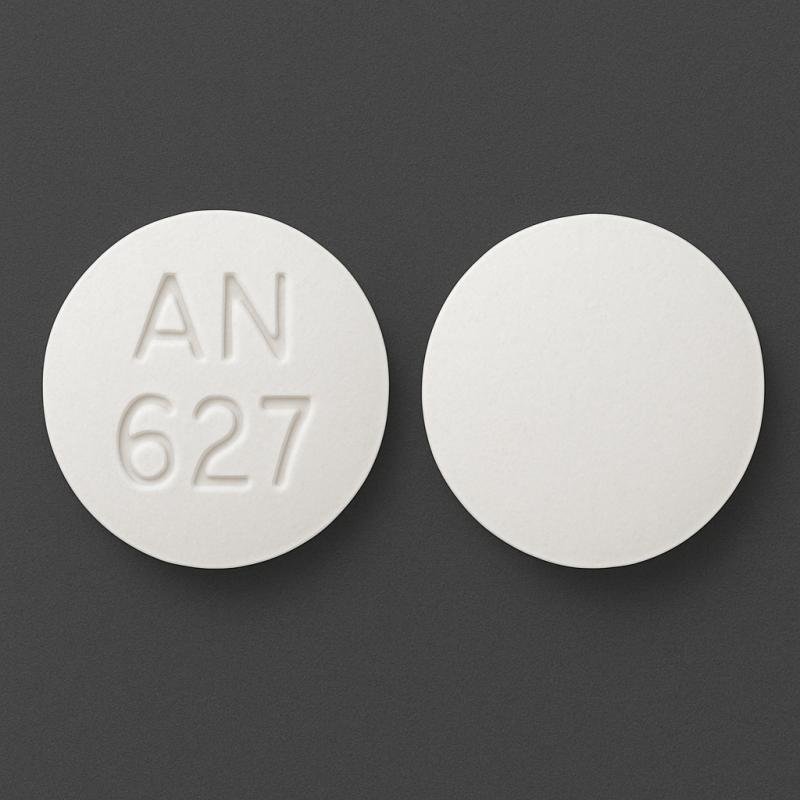Tramadol, also known as AN 627, is a prescription pain reliever typically prescribed for moderate to severe pain. While it is an effective pain reliever, Tramadol has the potential for misuse and dependence. With an abuse rate of 69 thousand people per year and up to 10% of users developing a dependence, it is crucial for individuals prescribed this medication to understand the potential addiction risks associated with this drug. [1]
Below, we’ll discuss how tramadol works, what conditions it treats, and help you spot the signs of addiction and overdose.
- AN 627 (Tramadol) is a prescription opioid pain reliever, mainly used for moderate-to-severe pain but also prescribed off-label for conditions like restless leg syndrome and premature ejaculation.
- Tramadol carries a risk of dependence, addiction, and withdrawal symptoms, especially with prolonged or improper use.
- Overdosing on tramadol can lead to serious complications, including seizures, respiratory depression, and even death, particularly when mixed with other substances.
-Pill_-Identification,-Effects,-and-Addiction-Risks.jpg?v=1746009035)
What is the AN 627 pill?
AN 627 is a tramadol pill that is FDA-approved for the treatment of moderate to severe pain. It is prescribed for pain that is refractory to other pain medications, specifically non-opioid pain relievers like acetaminophen or ibuprofen. [2] The drug also has off-label uses for treating premature ejaculation and restless leg syndrome when other medications have failed.
Since July 2014, the FDA has classified tramadol as a class IV controlled substance due to its potential for misuse and addiction. [2]
Tramadol works by binding to opioid receptors in the central nervous system to alter pain perception. It is converted into its active metabolite (which exerts the medication's effects) by the liver enzyme CYP2D6. It also inhibits the reuptake of neurotransmitters like serotonin and norepinephrine, which further enhances its pain-relieving effects. [1]
Because tramadol does not bind to the opioid mu receptor, which is the most common target of other opioid drugs like morphine, its effects are not completely reversed by naloxone administration. Naloxone is a competitive opioid antagonist that is FDA-approved to reverse opioid overdose. [3]
What AN 627 looks like

The AN 627 pill is a round white tablet imprinted with “AN 627” on one side. It contains 50 mg of tramadol hydrochloride. [4]
The imprint "AN 627" is unique to this specific formulation of tramadol, manufactured by Amneal Pharmaceuticals. This imprint acts as a standardized identifier, ensuring that healthcare providers, pharmacists, and patients can accurately recognize the pill. It also indicates the exact strength and type of medication, which is essential for safe dispensing and correct usage. The imprint helps prevent potential medication errors. There are other forms of tramadol 50 mg with different appearances, but the "AN 627" imprint is specific to this particular version.
Dosage and administration
Tramadol comes in two different oral forms, including immediate-release and extended-release tablets. It can also be administered rectally and parenterally (by injection). [4]
- Immediate-release pills are used for acute pain and come in a 50 mg dosage in a white tablet (AN 627 pill). Patients should receive 50-100 mg every 4-6 hours, with a maximum daily dose of 400 mg. [2]
- Extended-release tablets are typically prescribed for chronic pain and are taken once daily. The dosage starts at 100 mg and increases in 50 mg increments every 5 days if needed. The maximum recommended dose for extended-release tablets is 300 mg per day. These tablets should never be crushed, split, or dissolved because this can lead to dangerous rapid absorption, increasing the risk of side effects and overdose. [2]
Rectal administration is given in 100 mg doses, while injectable tramadol is available for subcutaneous injection (under the skin) or intravenous (into the vein). Dosage ranges from 50 to 100 mg. There is also a liquid formulation of tramadol that is available in a 5 mg/mL dosage. [5]
Your exact dosage and administration route may differ based on your healthcare provider's advice, the condition being treated, and the severity of pain.
Side effects and warnings for AN 627
Tramadol is a prescription medication and comes with the risk of side effects. The most commonly reported side effects of tramadol include:
- Nausea and vomiting
- Dizziness and drowsiness
- Headaches
- Constipation
- Itching or skin rash
- Increase heart rate or high blood pressure
- Reduced appetite
- Stomach irritation
Rare side effects
More rare but serious side effects can also occur, including central nervous system depression, which may cause slowed or difficult breathing, extreme drowsiness, or loss of consciousness. Seizures are also possible, especially at higher doses or when tramadol is combined with other substances. [2]
If you or someone else experiences any of these serious symptoms, call 911 or emergency medical services immediately. These effects can be life-threatening and require urgent care. For other, less severe side effects, be sure to contact your prescribing doctor to discuss them. [2]
Misuse, dependence, and addiction potential: Is AN 627 addictive?
Tramadol carries a risk of addiction due to its opioid properties. It is considered a class IV controlled substance, which means it has a low potential risk of abuse and addiction compared to other controlled substances, but it is possible to develop a dependency. [2]
Signs of dependence to look out for include:
- Needing higher doses to achieve the same effect. This may signify you are developing a tolerance to the medication's effects.
- Experiencing withdrawal symptoms (nausea, sweating, or agitation) when stopping the medication.
- Having cravings for the drug, using it compulsively, taking it more often, or higher doses than prescribed.
Because tramadol has opioid properties, individuals may use it recreationally to attempt to achieve a “tramadol high.” This can cause dangerous side effects and potentially lead to an overdose. If you or someone you know is showing signs of tramadol misuse, dependence, or addiction, there is help available. Treatment for tramadol misuse may involve medically supervised tapering, behavioral therapy, and, in some cases, medication-assisted treatment.
Dangers of overdose and AN 627 interactions
It is possible to overdose on tramadol. Due to the way that this medication works, by impacting opioid receptors, increasing serotonin, and norepinephrine, the signs of an overdose are slightly different than a traditional opioid overdose: [1]
- Pinpoint pupils (miosis)
- Slowed or stopped breathing (respiratory depression)
- Confusion, dizziness, or unconsciousness
- Seizures or tremors
- High blood pressure
- Irritability
- Increased deep tendon reflexes
Severe tramadol overdose can lead to multi-organ failure, coma, and death. Although fatal tramadol overdoses are uncommon, it is possible when individuals take other drugs with it, like benzodiazepines or alcohol.[1][2]
Tramadol interactions
Tramadol may cause dangerous interactions with certain drugs. This includes:
- Benzodiazepines and alcohol: Increases the risk of respiratory depression when combined with tramadol and may lead to fatal overdoses.
- Antidepressants (SSRI, SNRIs, MAOIs): Due to the elevated serotonin levels associated with tramadol use, combining it with other drugs that also increase serotonin levels can lead to serotonin syndrome. [6] This is a potentially fatal condition that results from excessive serotonin activity in the central nervous system and can result in agitation, dilated pupils, muscle spasms or rigidity, flushed skin, shortness of breath, and increased bowel activity.
- Other opioids: Taking tramadol with other opioids like morphine, oxycodone, hydrocodone, and fentanyl increases the risk of overdose. [1][2]
Safety guidelines
To avoid possible drug interactions or overdoses, it is crucial to take tramadol as directed by your medication provider. Other tips to minimize risks include:
- Avoid alcohol and other sedatives while using tramadol
- Do not take more tramadol than prescribed
- Do not crush or alter extended-release tablets
- Seek medical help if you experience severe side effects or signs of tramadol dependence or withdrawal
Following these tips can help you use tramadol safely for the relief of acute or chronic pain.


-(1)-guide-detail.jpg?v=1756808686)

-guide-detail.jpg?v=1722501965)